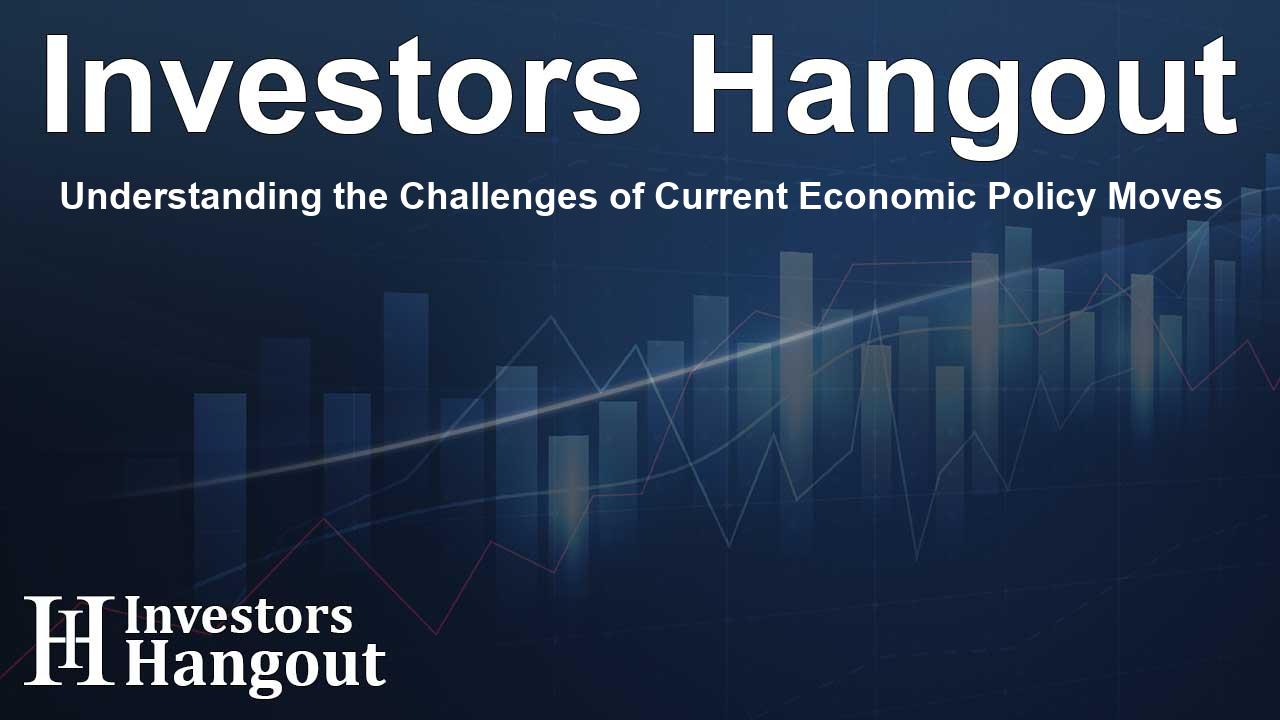Understanding the Challenges of Current Economic Policy Moves

Economic Policy Dilemmas and Labor Market Dynamics
In recent times, significant changes are unfolding in the economic landscape which influences the decisions made by policymakers. The complexities surrounding labor market conditions and inflation are at the forefront. This discussion begins with the recent appointment of a key economic advisor who is expected to guide monetary policies with profound implications.
Implications of Policy Changes
The nomination of Stephen Miran as a member of the Federal Reserve opens pathways for keen discussions among policymakers regarding interest rates. With his term lasting until early 2026, there could be shifts in perspectives within the Federal Open Market Committee (FOMC) regarding whether to adjust the federal funds rate. The nuances of his appointment may stimulate debates on rate cuts that highlight the vulnerabilities of the current labor market.
Dissenting Voices and Their Arguments
If the FOMC opts against lowering interest rates, we could see dissent from members who advocate for a reduction in response to evident labor market strains. They assert that lingering weaknesses in employment figures warrant an adjustment in policy to stimulate economic growth. Conversely, a rate cut might ignite inflationary pressures, drawing criticism from other committee members.
Understanding Labor Market Conditions
The ongoing discussions reveal a significant divide — one faction believes that the current job market shows signs of weakening demand for labor, while another suggests there exists a concurrent shortage of workers. Understanding these dynamics is crucial for policymakers trying to formulate effective economic strategies moving forward.
Effects of External Economic Factors
Economic conditions have been influenced by the recent tariff policies, which have led many employers to delay their hiring decisions due to market uncertainty. As the fog of uncertainty begins to lift, we might expect a resurgence in hiring. However, such a recovery could conflict with the Federal Reserve’s position on interest rates, particularly if inflationary pressures start to mount.
The Supply-Side Conundrum
Current conditions indicate that challenges primarily reside on the supply side of the labor market. A stagnation in labor force growth — attributed in part to stringent immigration policies — complicates matters for those seeking employment. Should the Fed decide to lower interest rates, it could inadvertently intensify the labor shortage, leading to increased wage and price pressures.
Recent Economic Indicators
The labor scene appears perplexed as evidenced by the mixed economic indicators that emerged following the latest payroll report. Downward revisions to previous employment figures and the increasing duration of unemployment create a challenging scenario as more individuals find themselves stuck without work. The maintainance of low layoffs contrasts sharply with rising claims among those facing prolonged unemployment.
Future Outlook and Anticipation
The Bureau of Labor Statistics continues to provide critical insights, revealing that nearly two million people have been unemployed for extensive periods. The average duration of unemployment is climbing, raising the stakes for the FOMC. Policymakers must weigh these trends against the potential for inflation, particularly with upcoming consumer price index (CPI) reports that are expected to reflect heightened pressures due to tariffs.
Preparing for Upcoming Economic Reports
As we approach the fall, key economic reports will significantly influence the FOMC's future decisions. The ensuing releases, particularly around employment data, could reinforce or alter expectations concerning interest rates, shaping the trajectory of economic health. Clarity around these reports will be vital as stakeholders navigate the complexities of a potentially turbulent economic environment.
Frequently Asked Questions
What is the significance of Stephen Miran's nomination?
Stephen Miran's nomination plays a crucial role in shaping U.S. monetary policy and may influence decisions related to interest rates in the coming years.
Why are some FOMC members dissenting against rate cuts?
Some FOMC members believe that a weakening labor market does not justify a rate cut and that doing so could exacerbate inflation risks.
How do tariffs impact employment decisions?
Tariffs have created uncertainty for employers, prompting some to delay hiring as they assess their business impacts, influencing overall employment rates.
What trends are visible in the labor market?
Current trends show a mix of low layoffs but longer unemployment durations, highlighting a struggling job market where many face prolonged joblessness.
What can we anticipate from upcoming economic reports?
Anticipated reports on employment and inflation will heavily influence FOMC decisions regarding interest rates, indicating potential shifts in economic policy.
About The Author
Contact Evelyn Baker privately here. Or send an email with ATTN: Evelyn Baker as the subject to contact@investorshangout.com.
About Investors Hangout
Investors Hangout is a leading online stock forum for financial discussion and learning, offering a wide range of free tools and resources. It draws in traders of all levels, who exchange market knowledge, investigate trading tactics, and keep an eye on industry developments in real time. Featuring financial articles, stock message boards, quotes, charts, company profiles, and live news updates. Through cooperative learning and a wealth of informational resources, it helps users from novices creating their first portfolios to experts honing their techniques. Join Investors Hangout today: https://investorshangout.com/
The content of this article is based on factual, publicly available information and does not represent legal, financial, or investment advice. Investors Hangout does not offer financial advice, and the author is not a licensed financial advisor. Consult a qualified advisor before making any financial or investment decisions based on this article. This article should not be considered advice to purchase, sell, or hold any securities or other investments. If any of the material provided here is inaccurate, please contact us for corrections.
